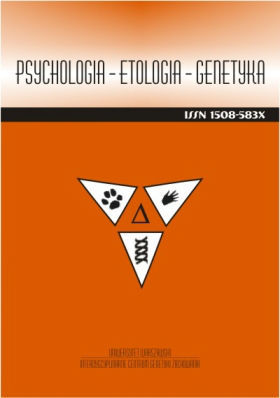Stabilność grupy społecznej jako czynn ik wpływający na nasilenie wokalizacji 22 kHz u szczurów
Social group stability as a factor influencing 22 kHz ultrasound vocalizations in rats
Author(s): Maciej Trojan, Judyta Gulatowska, Paweł OstaszewskiSubject(s): Psychology
Published by: Wydawnictwo Naukowe Scholar Sp. z o.o.
Keywords: social group stability; 22 kHz ultrasound vocalizations; rats
Summary/Abstract: Rats communicate in the range of ultrasounds. Sounds in the frequency of 22 kHz are interpreted as alarm signals since they appear as a response to aversive stimuli. The aim of the study is to find out whether social conditions in which the animals are kept influence the tendency to vocalize in a situation of stress. Two groups of rats are compared: the experimental one – with a non-stable composition of individuals, who were often moved into new home-cages, and the control group – a stable group of rats living together in their home-cages. After an adaptation period, when the social conditions had a chance to shape the relations between individuals, rats were individually exposed to a sound stressor and then the number and duration of USV vocalizations were registered. As the results show, stability of a group is important. The rats which had stable relations with others vocalized significantly less than those in non-stable groups. Also the impactof sex is revealed – the differences in vocalization levels were observed only in males.
Journal: Psychologia-Etologia-Genetyka
- Issue Year: 2015
- Issue No: 31
- Page Range: 23-35
- Page Count: 13
- Content File-PDF

